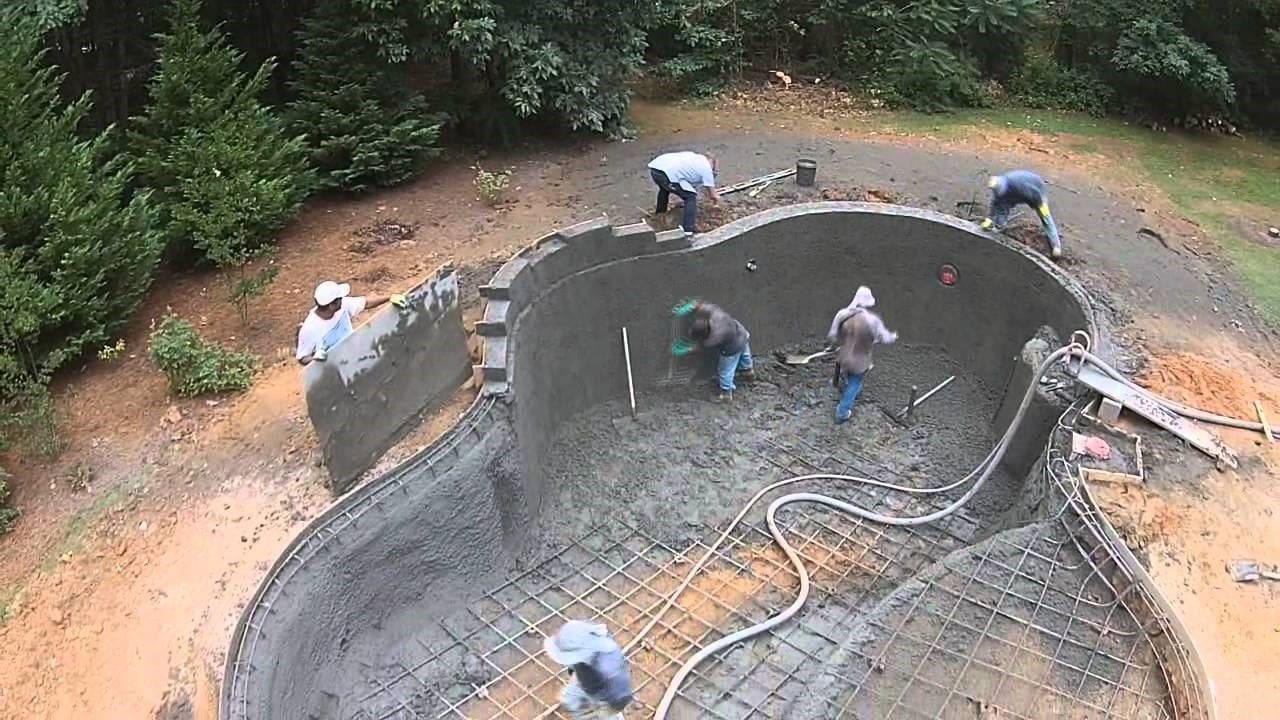In the Australian climate, most people dream of jumping into a swimming pool to cool down after a hot summer’s day. Going to the beach or to the local swimming pool on the weekend can become a bit of a chore (and an exhausting day trip), but having the convenience of a backyard swimming pool is both refreshing and time-effective. If you’re in a position to invest in one, the best way of achieving a durable swimming pool that will last a lifetime is to useshotcrete.
Unlike vinyl liner or fibreglass, shotcrete offers you far more flexibility and design creativity in building your dream swimming pool. While the process is more demanding and time-consuming, the results are well worth it! Despite this, it’s important to keep in mind that the curing process and protecting the shotcrete during construction is vital in achieving a final product that is high-performance and sturdy. Considering that these factors are commonly overlooked by pool builders, we’re going to explain the importance of these factors in more detail.
Curing
Curing involves the process of continuously wetting the final shotcrete layer with water to complete the cement hydration, increase strength, and reduce shrinkage cracks. It’s strongly advised that builders continuously cure swimming pools for seven days or until the specified strength has been achieved. There are several methods to cure shotcrete, including:
- Applying curing compounds
- Continuous sprinkling or ponding
- Covering with impervious sheet material
- Covering with an absorptive mat or sand which are kept continuously wet
It is the responsibility of the builder to ensure proper curing of the concrete shell, and protection from extreme weather if applicable. If the ambient relative humidity is above 95% for the duration of the curing period, then natural curing is permitted. Despite this, continuous sprinkling or ponding offers of the best curing environment in the Australian climate.
The curing process should begin as soon as water can be applied to the cement without eroding the surface of the shotcrete. An effective yet simple technique is to position two oscillating lawn sprinklers on tripods so water is sprayed over the entire pool surface. The water that collects at the bottom of the shell can then be recycled using a submersible pump. Considering that all desirable properties in concrete are improved by the curing process, you should extend the curing period for as long as practical, however ponding for at least three days and ideally seven is recommended.
Protection
Extreme weather can affect the properties of shotcrete and result in an inferior final product. Builders must bear in mind that shotcrete can only be sprayed when the outside air temperature is between 50C and 370C. If the temperature is outside this range, then specific retarding agents and accelerants can be used but this is generally not recommended.
When the weather gets cold during the night, builders should protect the shell of the pool by placing a portable heater in the deep end and covering the top of the pool with an inflated vinyl dome. Alternatively, builders can place plastic sheeting over a lumbar frame to create an enclosure. The aim is to keep the surface of the shell between 100C and 210C.
If a fuel-fired heater is used then a vent for the enclosure will be required to avoid carbonation and dusting to the surface of the shell. Where heaters have been in enclosures or any carbonation has formed, it’s recommended to pressure wash the surface of the shotcrete before applying the finish coat.
Achieving the best results
While proper curing and protection of the shotcrete during construction is required, the benefits of performing these steps results in up to 50% higher shotcrete strengths. Providing a high-performance product that is built to Australian standards is the goal of any reputable builder, so if you have any questions regarding these processes, get in contact with the experts at Evolution Shotcrete by phoning 07 5561 8885.
